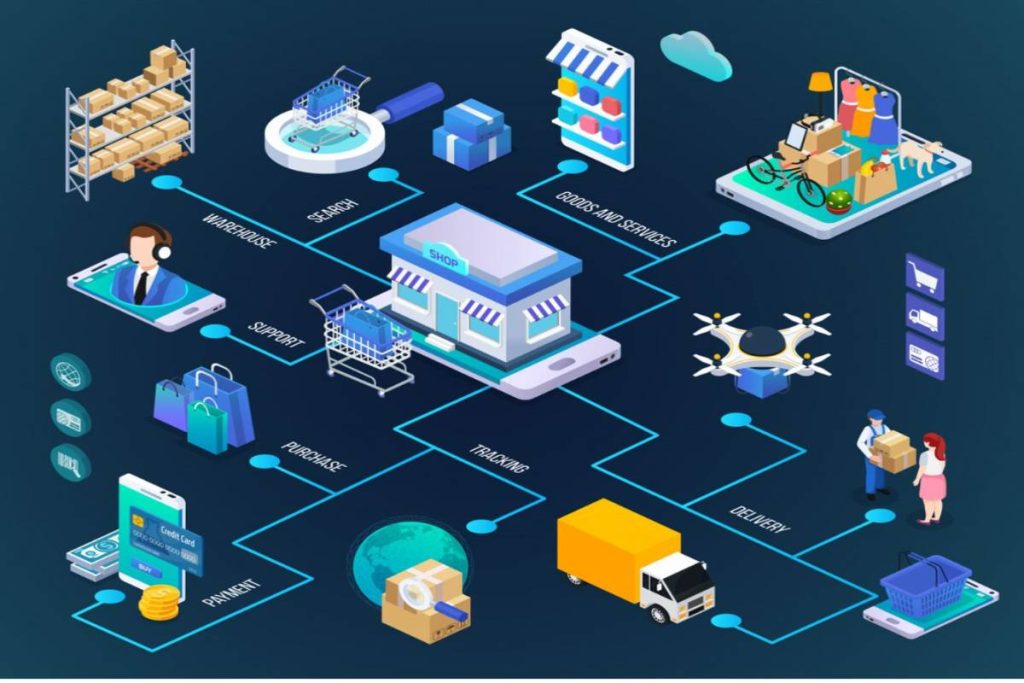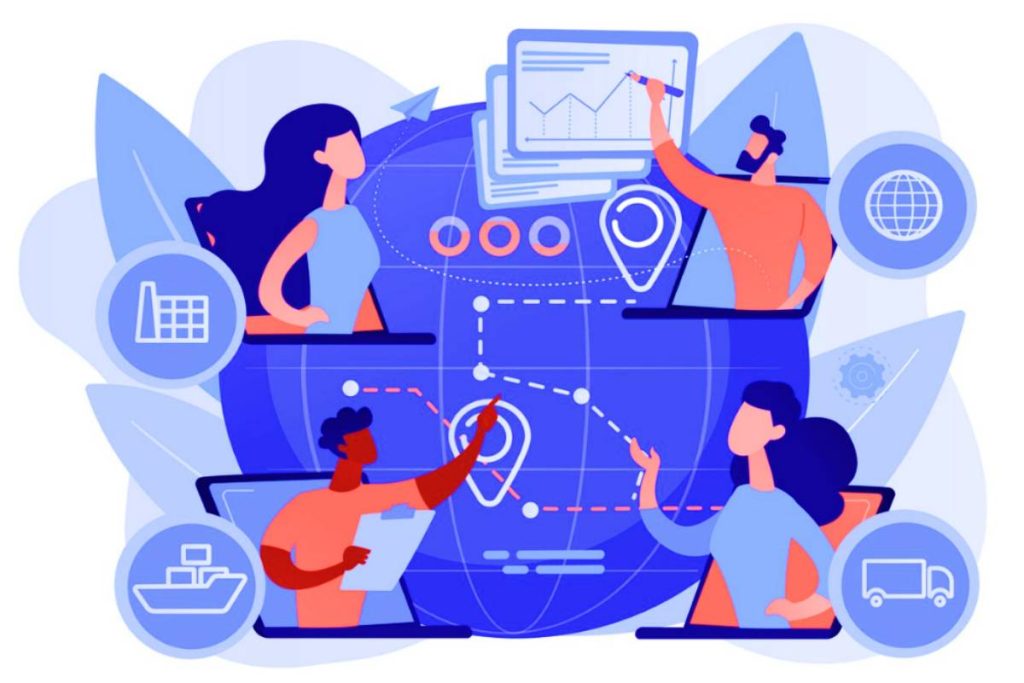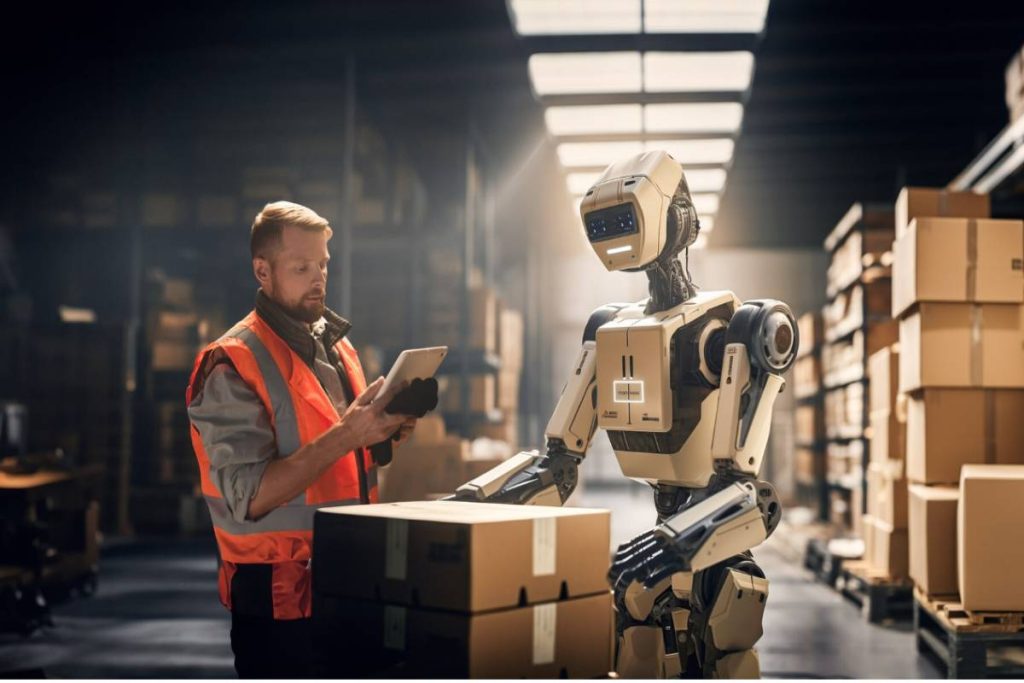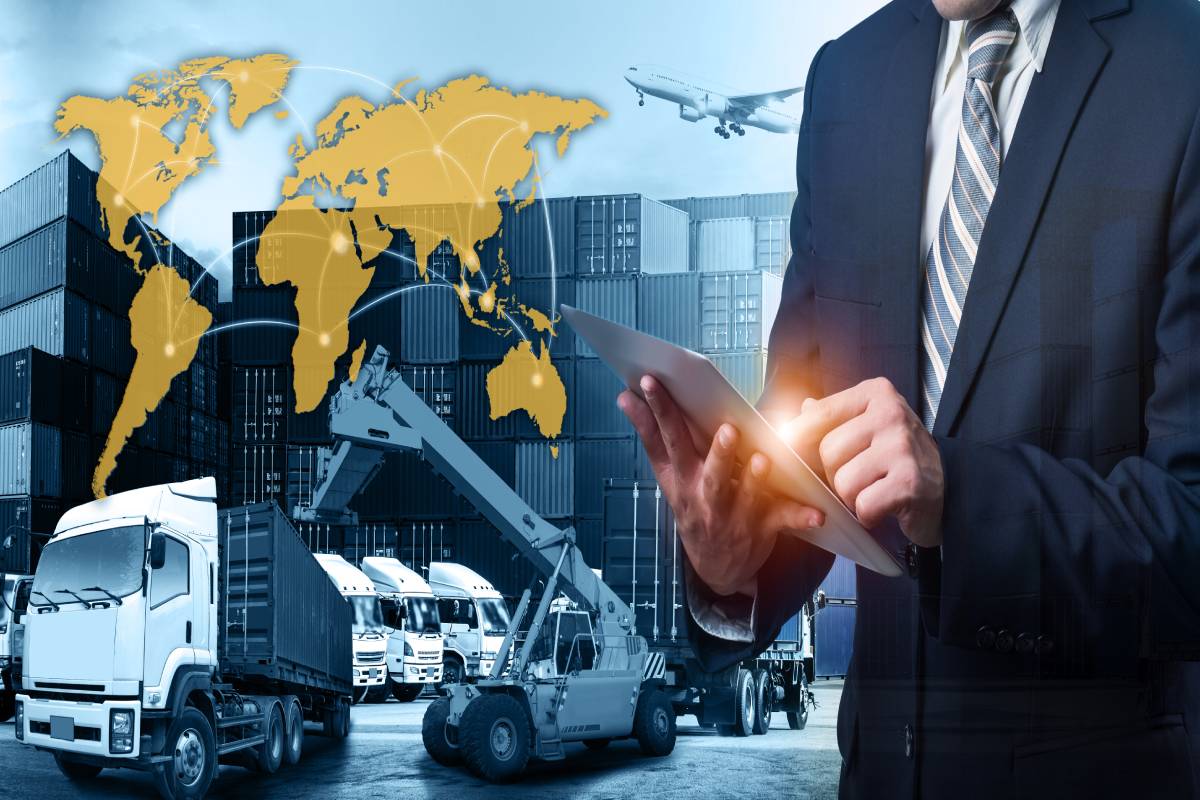Imagine you order a new pair of noise-canceling headphones online, and within hours, they’re delivered to your doorstep, seemingly appearing out of thin air. This magic trick isn’t the work of wizards, but of a revolution quietly happening behind the scenes: Logistics 4.0.
Logistics 4.0 is the next generation of supply chain management, characterized by increased automation, data-driven decision making, and a focus on sustainability. It leverages technologies like artificial intelligence, robotics, and the Internet of Things (IoT) to optimize every step of the fulfillment process, from warehousing to last-mile delivery.
The impact of Logistics 4.0 extends far beyond just faster deliveries. By using real-time data to track inventory and predict demand, businesses can reduce waste and optimize their transportation networks. This not only saves money but also helps to minimize the environmental impact of logistics operations. Additionally, Logistics 4.0 can create a more transparent supply chain, giving customers greater visibility into the journey of their products.
This can help to build trust and loyalty among consumers.
In short, Logistics 4.0 is transforming the way we move goods around the world. It is making supply chains more efficient, sustainable, and customer-centric. The future of logistics is bright, and it is being built on the foundation of Logistics 4.0.
The Old Days of Supply Chains
For decades, supply chain management (SCM) relied on what feels like old-age technology. Fax machines whirred, filing cabinets overflowed, and spreadsheets held the key to keeping track of inventory. While this system worked, it was slow, prone to errors, and lacked the agility needed in today’s fast-paced world.
This inflexibility became painfully evident during the recent global pandemic, where disruptions rippled through every corner of the supply chain. Companies that relied on manual processes struggled to adapt to rapidly changing conditions, leading to stock shortages, production delays, and frustrated customers. The pandemic served as a wake-up call, highlighting the urgent need for modernization in SCM. In response, there has been a surge in the adoption of digital technologies like cloud computing, artificial intelligence, and the Internet of Things (IoT). These technologies are transforming SCM by automating tasks, improving visibility, and enabling real-time decision-making. As businesses continue to embrace digital transformation, the future of SCM looks brighter than ever, with greater efficiency, resilience, and customer satisfaction on the horizon.
Enter Technology Trending

The arrival of Technology Trending like the Internet of Things (IoT), Artificial Intelligence (AI), and Big Data is shaking things up in the world of logistics. Think of it like this: Imagine every product you order has a tiny voice whispering its location and status. This is the power of IoT sensors embedded in packages, giving us real-time information on where things are and when they’ll arrive.
The impact goes beyond just tracking and communication. By crunching the massive datasets generated by IoT devices (Big Data), AI can predict and optimize logistics on a whole new level. Imagine a system that analyzes traffic patterns, weather conditions, and even historical delivery times to create the most efficient routes for trucks. This not only reduces fuel costs and emissions but also ensures timely deliveries, making happy customers and businesses alike. This powerful trio of technologies – IoT, AI, and Big Data – is transforming logistics from a reactive to an initiative-taking industry, one that anticipates and solves problems before they even occur. It’s a revolution that’s bringing efficiency, transparency, and a whole new level of customer satisfaction to the world of getting things from point A to B.
AI Chatbots like ChatGPT is changing the game. Imagine a friendly robot assistant that can answer customer questions about deliveries 24/7, freeing up human workers to focus on more complex tasks. It’s not science fiction, it’s the future!
The Powerhouse of Logistics 4.0

So, what exactly makes Logistics 4.0 so powerful? Let’s break down some of the key technologies driving this transformation:
The Internet of Things (IoT): This network of connected devices allows real-time tracking of inventory, from raw materials to finished products. Imagine a warehouse where robots can autonomously locate and move items based on data collected by sensors. That’s the power of IoT!
Artificial Intelligence (AI) and Machine Learning (ML): AI and ML algorithms can analyze vast amounts of data to predict demand, optimize routes, and even identify potential disruptions in the supply chain. It’s like having a super-smart assistant constantly working behind the scenes to ensure smooth operations.
Big Data Analytics: Logistics generates a massive amount of data. Big Data Analytics allows us to analyze this data to identify trends, optimize processes, and make data-driven decisions that improve efficiency and reduce costs.
Blockchain Technology: This secure and transparent system can track the movement of goods throughout the supply chain, providing greater visibility and reducing the risk of fraud. Imagine a digital ledger that shows exactly where your product has been, from its origin to your doorstep. Pretty cool, right?
Logistics 4.0 isn’t just about getting things delivered faster and cheaper. These new technologies can actually help the environment too! Imagine using super-smart computers to plan delivery routes that use less gas or having real-time trackers on supplies to avoid waste.
Logistics 4.0 also makes things more open and honest between all the businesses involved in getting a product from factory to your doorstep. This indicates that businesses may collaborate more effectively and forge closer bonds with all of their partners, including clients. Because everyone can see what’s going on, companies can be sure they’re getting their supplies from places that treat workers well and don’t harm the environment, exactly what many people care about these days. So, Logistics 4.0 isn’t just a fancy upgrade, it’s a whole new way of moving things that’s better for the planet and connects everyone involved.
Benefits of Logistics 4.0
While faster delivery times are certainly a benefit of Logistics 4.0, the benefits extend far beyond speed. Here’s a glimpse of what this new era holds:
Increased Efficiency: By automating tasks and optimizing processes, Logistics 4.0 can significantly improve efficiency in the supply chain. Less time wasted translates to lower costs and improved customer satisfaction.
Enhanced Visibility: Real-time tracking and data analytics provide a clear picture of where things are in the supply chain. This allows for better decision-making and faster response times to disruptions.
Reduced Costs: Improved efficiency and automation lead to cost savings across the board. These savings can be passed on to consumers in the form of lower prices.
Sustainability: Logistics 4.0 can help to reduce the environmental impact of supply chains. For example, AI can be used to optimize routes and reduce fuel consumption. With growing social and environmental concerns, this is a major benefit!
Improved Customer Experience: Faster delivery times, accurate tracking information, and better communication lead to a more positive customer experience. Happy customers mean repeat business!
Logistics 4.0 isn’t just about saving money and getting things where they need to go faster. It’s also about being kind to the environment! With these new technologies, businesses can find smarter ways to be sustainable throughout their entire delivery system. Imagine super-strong boxes that can be used over and over again, or quiet, electric trucks that zip through city streets without spewing out fumes. These aren’t just dreams – they’re real things people are working on right now. By using these new ideas, delivery companies can dramatically shrink their carbon footprint, making the whole process of getting things from point A to point B greener. This is good for the planet, of course, but it’s also smart business. Today, more and more people care about the environment and choose companies that do too. By jumping on board with Logistics 4.0, businesses can show everyone they’re serious about protecting the Earth, which builds trust and attracts even more customers.
Logistics 4.0 Doesn't Replace People

While technology is at the forefront of Logistics 4.0, it’s important to remember that Entrepreneurs and the human workforce are still vital. Jobs won’t disappear; they’ll simply evolve. Imagine people working alongside robots in warehouses, using their skills to manage complex operations and solve problems. Natural Language Processing (NLP) can power AI Chatbots to handle basic customer inquiries, freeing up human customer service representatives to deal with more intricate issues. The future of logistics is a collaborative one, where humans and technology work together to create a more efficient and streamlined system.
This collaborative future will require a focus on developing a new workforce skillset. Employees will need to be adaptable and willing to learn new technologies. Logistics professionals will need to possess strong analytical and critical thinking skills to effectively manage the data and automation that will be central to Logistics 4.0. The ability to think critically and creatively will be essential for navigating the complexities of an ever-evolving supply chain. In short, the future of logistics is bright, but it will require a workforce that is prepared to embrace change and develop the skills necessary to thrive in a technology-driven environment.
Challenges of Logistics 4.0
As with any major change, Logistics 4.0 presents challenges alongside its many opportunities. Here are some key hurdles to consider:
Upfront Investment: Implementing new technologies can be expensive. Entrepreneurs in the logistics industry will need to carefully evaluate the costs and benefits before taking the plunge.
Cybersecurity Concerns: As more devices and systems are connected, the risk of cyberattacks increases. Robust security measures are essential to protect sensitive data.
The Need for Upskilling: The rise of automation will necessitate upskilling the workforce. Workers will need to develop new skills to adapt to the changing landscape of logistics.
Ethical Considerations: AI algorithms can perpetuate biases if not carefully designed. It’s crucial to ensure ethical development and use of AI in the supply chain.
The biggest roadblock to getting started with Logistics 4.0 is all the old-fashioned equipment and ways of doing things that many logistics companies are still stuck on. These outdated systems weren’t built to work with the new tech that powers Logistics 4.0. Upgrading or replacing them entirely can be a real hassle and cost a lot, but it’s got to be done if companies want to reap all the benefits of Logistics 4.0. This can make it slow to get going and cause problems when trying to connect the new tech with the old stuff. Businesses need to figure out ways to bridge this gap between their current setup and the needs of a more digital future.
How to Prepare for a Smooth Transition
The good news is that these challenges can be addressed with proper planning and preparation. Here are some tips for navigating the transition to Logistics 4.0:
- Start Small: Don’t try to get done with your entire operation overnight. Begin by implementing new technologies in a phased approach.
- Invest in Cybersecurity: Implement robust cybersecurity measures to protect your data and systems.
- Focus on Upskilling: Provide training and development opportunities for your workforce to help them adapt to new technologies.
- Embrace a Culture of Innovation: Foster a culture that encourages experimentation and innovation to stay ahead of the curve.
Get Ready for a More Efficient and Sustainable Supply Chain
Logistics 4.0 represents a significant leap forward in supply chain management. By embracing new technologies and adapting to change, businesses can unlock a world of benefits, from increased efficiency and reduced costs to enhanced customer experience and a more sustainable future. The future of logistics is exciting, and with careful planning, everyone can reap the rewards of this technological revolution.
Forget fancy words, Logistics 4.0 is about working together smarter with new tech! It’s like breaking down walls between different teams and companies. Everyone shares information in real-time, like a giant chatroom for deliveries. This way, factories can predict how much stuff they need to make based on what’s actually selling, and warehouses can adjust their crew depending on how many deliveries are coming in. Imagine – no more grumpy delivery people waiting forever at warehouses! This teamwork with tech makes everything faster and smoother, and helps businesses bounce back from problems quicker. It’s like a well-oiled machine, but for deliveries! Of course, changing things takes time and money, but the benefits are huge. In the future, companies will be able to deliver even better to their customers, no matter what unexpected things happen.

